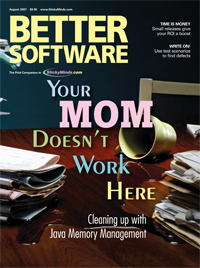In this continuation of his June 2007 article on floating-point numbers, Chuck Allison explains why certain compilers miscalculate sin(x) for large arguments and why some get it right. He also divulges that floating-point spacing is the key to getting the most from numeric computations.
Better Software Magazine Archive:
August 2007



